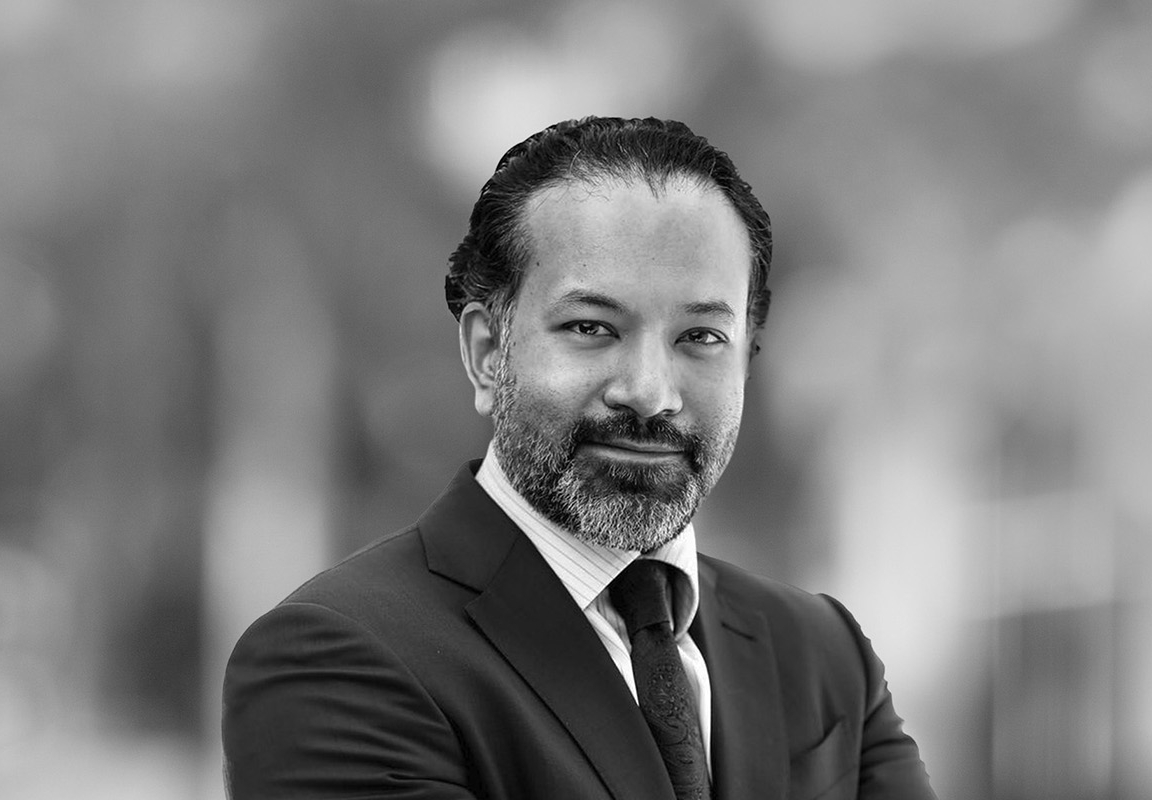
Access to energy underpins our day-to-day and powers global economic prosperity and development, yet consumption of energy is the dominant contributor to climate change, accounting for approximately 60% of total global greenhouse gas emissions1. While the international community advances towards sustainable energy targets, progress is not necessarily keeping pace with increasing inflation and energy prices, or the prevailing delicate energy security environment. The task of transitioning from traditional fossil-fuel based energy to renewable energy is arguably more important than ever.
Why energy transition matters for the global economy
Basic energy access and affordability remain significant development barriers in many parts of the world. Although global electricity use is rising rapidly alongside the proportion of the global population with access to electricity, by current estimates close to 2 billion people will still rely on fossil-fuel based energy for their daily needs by 20302. This continued reliance on 'brown' energy sources puts even greater strain on energy infrastructure that is already struggling to meet the demands of economic growth and social welfare, particularly in emerging markets. The tangible manifestations of physical climate risk are increasingly prevalent globally, including in the Middle East. Persistent rising temperatures and changing precipitation patterns have aggravated water scarcity in some countries, while causing intense floods in others3. In Oman, for example, peak electricity demand is forecast to rise by around 4% per year until 2027, driven largely by greater air conditioning usage due to higher projected summer temperatures4.
Other regions are no less immune to energy challenges. The Russia-Ukraine conflict caused severe energy disruption in Europe and exposed the high level of dependency on Russian gas imports. This, in turn, caused policy diversion away from the climate change agenda, as affected countries necessarily pivoted to prioritise immediate energy security needs. The scramble to restock gas reserves through liquefied natural gas ("LNG") compounded the policy diversion (and saw countries like Bangladesh and Pakistan priced out of the market and forced to revert to coal- and oil-based energy generation5) although, despite increased short term use across the EU of coal, nuclear and imported LNG, the EU quickly established the REPowerEU plan to accelerate its collective transition to renewable energy.
Economic dependency is also a key consideration affecting the pace of energy transition, particularly for relatively energy-secure Middle Eastern economies, as well as other net energy-exporting countries globally, whose GDP remain highly dependent on hydrocarbon sector revenues. Unsurprisingly, these countries have emphasised the need for adopting a balanced, methodical approach to energy transition to avoid jeopardising global energy security and increasing inflation. This was expressed by Dr. Sultan Al Jaber, the United Arab Emirates ("UAE") Special Envoy for Climate, and COP28 President-Delegate, at the Copenhagen Climate Ministerial Meeting in March 2023: "The focus should be on stopping emissions and not abandoning the current energy system before the future energy system is ready"6. Demand for oil and gas is expected to continue for the next few decades, even under an 'achieved commitments' scenario, but there is mounting pressure on oil and gas producers to pivot towards cleaner or renewable energy production. This is reflected in the commitments and strategies of the Gulf States which seek to diversify their energy mix (using renewables, CCUS (carbon capture, utilisation and storage) and hydrogen) and integrate hydrocarbon-fired facilities with clean energy systems. Conventional assets such as production plants and pipelines may remain relevant but will need to be repurposed to manage flexible utilisation or use cleaner fuel mixes to mitigate stranded asset risk and broader economic dependency on hydrocarbon-sector revenues.
The pivot to cleaner or renewable energy sources
To date, energy transition has been largely driven by government policy and regulation on both a domestic and international scale. At COP21, commitments to reducing greenhouse gas emissions were formalised via nationally determined contributions ("NDCs") laid out in the 2015 Paris Agreement. However, the latest science from the United Nations Intergovernmental Panel on Climate Change indicates the progress to date is insufficient and that greenhouse gas emissions need to be cut by 43% by 2030, against 2019 levels, in order to meet agreed targets7.
From 2024 onwards, under the Enhanced Transparency Framework ("ETF"), signatories of the Paris Agreement will be obligated to report transparently on actions taken and progress made in climate change mitigation. The rapid approach of this requirement has spurred a further round of pledges to diversify local energy sources, increase investment and further develop renewable energy infrastructure. In the Middle East, Saudi Arabia has set a target of 50% renewable energy in its power mix by 2030, while the UAE is targeting 44% by 20508. Similarly, governments across Southeast Asia have set out long-term plans for a more secure and sustainable future; of the 10 ASEAN countries, eight have announced national targets to achieve net-zero greenhouse gas ("GHG") emissions or to become carbon neutral by 20509.
After years of depending on regulation and subsidisation for growth and development, renewable energy sources are now becoming preferred and cost-effective. For example, electricity from fossil fuels costs between 5 and 17 cents per kilowatt-hour, whereas solar energy costs average between 3 cents and 6 cents per kilowatt-hour and its prices continue to trend downwards as the technology to harness it develops and becomes even more accessible10.
However, power generation is only one component of energy transition. Another vital factor is large-scale renewable energy storage. Until recently, the availability and reliability of renewable energy storage was seen as a blocker to the eventual decarbonisation of energy systems, but as the technology becomes more accessible and costs fall the potential commercial uses of renewable energy expand. The success of continued research, development and deployment of clean and renewable energy solutions remains dependent on financial institutions facilitating global climate efforts by providing the right financing solutions in the right place at the right time.
Financing the transition to a net-zero future
According to S&P Global Commodity Insights, the global share of energy that comes from renewables needs to increase from 3% currently to 31% by 2050, while in parallel, fossil fuel-based energy usage must decline from 80% currently to 33% by 2050 in order to meet Paris Agreement climate goals11. Achieving this comes at significant cost, and further analysis suggests there is a funding gap of almost US$25 trillion against forecast spending to meet Paris Alignment goals12. This represents a considerable opportunity for capital providers serving companies looking to transform their carbon-intensive operations – but with great reward comes great risk, and driving these large investments is further complicated by a macroeconomic environment of higher interest rates and inflation. While not impossible, financing these much-needed large, complex projects, particularly in emerging markets, can be difficult and requires extensive collaboration and cooperation across both the public and private sectors.
Development finance institutions and multilateral development banks ("MDBs") are increasingly engaged in climate financing – the World Bank Group delivered a record US$38.6 billion in climate financing in the fiscal year 2023, a 22% increase compared to the year before13. Beyond direct investment, these institutions have a key role to play as enablers, working to incentivise greater deployment of private sector capital through creating supportive policies and regulatory environments, increasing the supply of financeable opportunities and developing innovative financing instruments14.
With a supportive environment in place, the private financial sector may facilitate as much as US$3.5 trillion of annual climate financing opportunities between 2022 and 2050, split between repurposing and retooling legacy systems and investment in new technologies15. Across debt markets, there is significant pressure from lenders seeking greater transparency on environmental, social and governance ("ESG") priorities, targets and outcomes with these playing an ever-larger role in dictating capital flows, as highlighted in the Institute for International Finance's recently updated Principles for Stable Capital Flows and Fair Debt Restructuring.
The role of Islamic Finance
At its core, Islamic finance is a set of faith-based financial products and institutions promoting ethical, sustainable and environmentally and socially responsible finance for all. The ethical principles guiding Islamic finance and the screening applied to each transaction converge in practice with the principles of responsible finance and the goals of climate financing. Amidst growing interest from both investors and Islamic finance institutions to capitalise on the synergies linking Islamic finance and climate action, the pathway towards a just energy transition presents substantial opportunities for the growth of Islamic finance as an alternative tool for bridging the financing gap.
Since its inception, Islamic finance has provided parties seeking capital and financing opportunities with a means to further diversify their funding sources and mitigate risk exposure. For issuers and borrowers from all over the world it has facilitated access to pools of liquidity from Islamic institutional investors, principally across the Middle East and Southeast Asia, seeking Shari'a-compliant returns.
Active investor interest has also been accompanied by ever growing regulatory and policy activity in this space, as well as increasing private sector engagement and the natural coalescing of Islamic and sustainable financing. Financial institutions such as international commercial banks are increasingly focused on 'greening' their financing portfolios and originating more sustainability related financings, both in conventional and, where applicable, Shari'a-compliant formats.
In parallel, monetary authorities, financial regulators and industry bodies across the Middle East and Southeast Asia have taken steps to introduce new policies and refine existing provisions on green and sustainable bonds and sukuk, as well as publishing taxonomies for what constitutes sustainable finance activities. For example, in 2018 the ASEAN Capital Markets Forum revised their Green Bond Standards, followed in 2022 by Sustainability-Linked Bond Standards, both of which apply to sukuk, in 2019 the Egyptian Financial Regulatory Authority introduced their Green Bond Guide and the Jordanian government introduced similar guidance on green bond and sukuk issuance in 2021. In Malaysia, the Sustainable and Responsible Investment ("SRI") Sukuk Framework was introduced as far back as 2014 by the Securities Commission Malaysia, followed in 2022 by the Sustainable and Responsible Investment linked (SRI-linked) Sukuk Framework (SRI-Linked Framework). More recently still, the International Capital Market Association (ICMA), the Islamic Development Bank (IsDB) and the London Stock Exchange Group (LSEG) announced this week at COP28 in Dubai their collaboration to develop a practitioners guide on the issuance of Green Sukuk16.
The Islamic finance market continues to witness relatively high levels of activity despite generally challenging financial market conditions over the last 12 months. This growth trend is not expected to abate any time soon, particularly given: (i) the continued demand for sustainable finance products, including sustainable sukuk issuances to finance green, ESG or sustainable projects (such as, in the last 18 months, the Republic of Indonesia's Sovereign Green Sukuk issuances, Al Rajhi Bank's Sustainable Sukuk and DP World's Green Sukuk, to name a few); and (ii) as mentioned above, economies whose GDP remain highly dependent on hydrocarbon sector revenues include countries that have traditionally been hubs for Islamic finance (such as the GCC states, Malaysia and Indonesia) and that have also committed to ambitious emissions reductions and announced ambitious policies to diversify their energy mix and economies. This all points to the increasing relevance of Islamic finance as a tool for funding the energy transition.
Looking ahead
Despite the flurry of activity in recent years, the potential of Islamic finance remains relatively untapped. The UKIFC estimates green and sustainability sukuk could generate between US$30-50 billion of capital towards SDGs by 202517, but the opportunity does not just sit within Islamic capital markets; according to the UNDP, globally zakat alone could help to mobilise a further US$200 billion to US$1 trillion annually for the Sustainable Development Goal agenda18.
The arduous task of ensuring energy resilience and affordability while reducing emissions to meet growing global energy demand continues to shape global economic development. To achieve the objective of the Paris Agreement of ‘making finance flows consistent with a pathway toward low GHG emissions and climate-resilient development' swift and decisive action is needed.
Against an increasingly complex geopolitical backdrop, and with COP28 currently in full swing, the focus is on the 'how' – how to implement and accelerate a just energy transition and how to finance it going forwards. Every dollar that can be mobilised is needed and unlocking the potential of the Islamic finance market could be a key next step in this journey.
1 https://www.un.org/sustainabledevelopment/energy/
2 Ibid.
3 https://www.iea.org/commentaries/climate-resilience-is-key-to-energy-transitions-in-the-middle-east-and-north-africa
4 https://omanpwp.om/PDF/7%20Year%20Statement%20Issue%2015%202021%20-%202027.pdf
5 https://www.spglobal.com/en/research-insights/featured/markets-in-motion/establishing-energy-security
6 "Climate Ministers meet in Copenhagen to set the course towards COP28," State of Green, https://stateofgreen.com/en/news/climate-ministers-meet-in-copenhagen-to-set-the-course-towards-cop28/
7 https://unfccc.int/process-and-meetings/conferences/un-climate-change-conference-united-arab-emirates-nov/dec-2023/about-cop-28#Why-is-COP28-important
8 https://www.fitchratings.com/research/infrastructure-project-finance/middle-eastern-countries-continue-to-target-higher-renewable-energy-capacity-11-05-2023
9 https://www.spglobal.com/commodityinsights/en/ci/research-analysis/which-asean-countries-will-be-the-frontrunners-to-decarbonize.html
10 https://www.consumeraffairs.com/solar-energy/solar-vs-fossil-fuels.html
11 http://www.spglobal.com/en/research-insights/featured/special-editorial/look-forward/energy-transition-gaps-in-the-pathways
12 Ibid.
13 https://www.worldbank.org/en/news/factsheet/2023/10/10/climate-finance-update
14 https://www.aiib.org/en/how-we-work/paris-alignment/_download/AIIB-Climate-Action-Plan.pdf
15 https://www.mckinsey.com/capabilities/risk-and-resilience/our-insights/financing-the-net-zero-transition-from-planning-to-practice
16 https://www.icmagroup.org/News/news-in-brief/icma-isdb-and-lseg-announce-collaboration-to-develop-a-practitioners-guide-on-the-issuance-of-green-sukuk/
White & Case means the international legal practice comprising White & Case LLP, a New York State registered limited liability partnership, White & Case LLP, a limited liability partnership incorporated under English law and all other affiliated partnerships, companies and entities.
This article is prepared for the general information of interested persons. It is not, and does not attempt to be, comprehensive in nature. Due to the general nature of its content, it should not be regarded as legal advice.
© 2023 White & Case LLP




